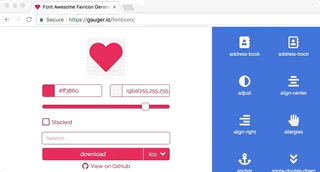I have created an online Favicon Generator with which you can create favicons from Font Awesome Icons. You can preview the created favicon live in the browser.
If you want additional features please feel free to submit an issue or a pull request here :).
